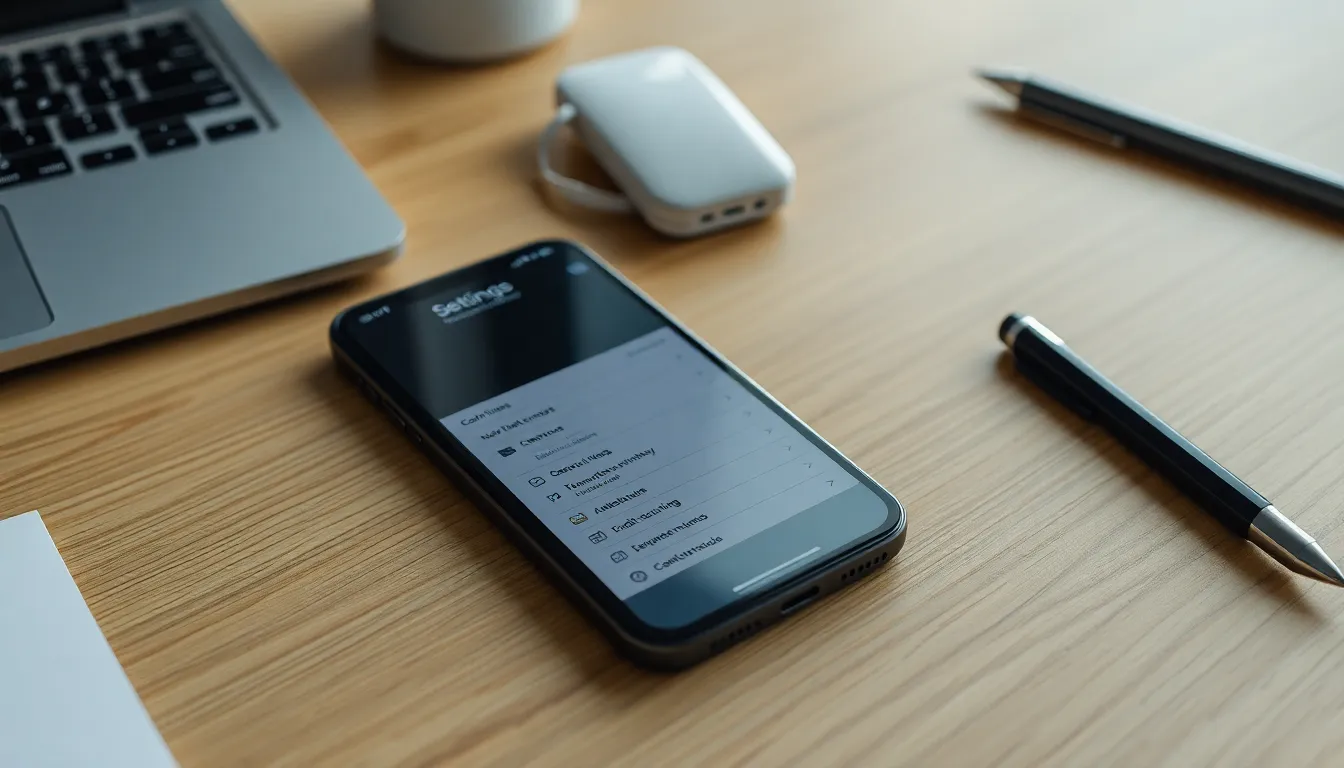If your iPhone’s vibrating like it’s auditioning for a role in a dance-off, it’s time to take control. While a little buzz can be charming, constant vibrations can turn your pocket into a mini earthquake. Whether it’s during a meeting, a quiet dinner, or that much-needed nap, those relentless vibrations can be downright distracting.
Fear not! With just a few simple tweaks, you can silence the buzz and reclaim your peace. From adjusting notifications to mastering the settings, he’ll discover how to make his iPhone as quiet as a library. Get ready to enjoy a vibration-free life—because who needs a phone that thinks it’s a massage therapist?
Table of Contents
ToggleUnderstanding iPhone Vibration Settings
Understanding iPhone vibration settings helps users manage notifications effectively. These settings allow customization for different scenarios and preferences.
Overview of Vibration Features
Vibration features on an iPhone include options for incoming calls, messages, and alerts. Users can assign specific vibrations to contacts or notification types, enhancing personalization. Standard vibration patterns provide feedback without sound, making it ideal for discreet situations. Users can also choose a silent mode that disables vibrations altogether. Adjusting these features ensures that the iPhone responds in a manner that aligns with user preferences.
Importance of Managing Vibration
Managing vibration plays a critical role in reducing distractions. Excessive vibrations can lead to interrupted conversations or disrupted focus in meetings. By controlling vibration settings, users create a more peaceful environment. Proper management contributes to a more enjoyable user experience. Long-term exposure to constant vibrations can lead to increased stress. Fine-tuning these settings empowers users to tailor their iPhone to suit their individual lifestyle and needs.
Adjusting System Settings

Adjusting system settings helps reduce unwanted vibrations on an iPhone. Several options exist that allow users to customize their vibration preferences effectively.
Turning Off Vibration for Calls
To turn off vibration for calls, navigate to Settings. Select Sounds & Haptics, then tap on Ringtone. In this section, find the Vibration option and set it to None. Following these steps silences vibrations for incoming calls. Users can still receive notifications via sound or by visual alerts if needed.
Disabling Vibration for Notifications
Disabling vibration for notifications occurs in a similar manner. Access Settings again, then open Notifications. Choose each app needing adjustments, and toggle off the sound or vibration settings. This method allows users to manage vibrations for messages, alerts, and other notifications effectively. Ensuring a vibration-free experience eliminates unnecessary distractions during work or personal moments.
Managing Third-Party Apps
Adjusting third-party app settings can significantly reduce unwanted vibrations. Identifying which apps cause excessive vibrations allows users to target specific sources. To find these apps, users should check the notification settings under each app in the Settings menu. By reviewing vibrational alerts, users can pinpoint the culprits.
Identifying Apps That Cause Vibration
Apps frequently generate notifications, triggering vibrations. Social media platforms often lead to continuous buzzing, especially during busy hours. Messaging applications can also produce numerous alerts. Identifying these apps requires checking notification settings. Users can view the frequency and type of alerts generated by each app. Upon recognition, it becomes easier to manage or mute notifications from those applications.
Customizing App Notifications
Customizing notifications helps control vibrations effectively. Users can navigate to Settings, then Notifications, and select individual apps to adjust settings. Disabling vibration alerts provides immediate relief from disturbances. Furthermore, silencing non-essential notifications can lead to a more focused environment. For certain apps, users might prefer to receive visual alerts instead of vibrations. Tailoring these settings fosters a more personalized interaction with technology, ultimately reducing distractions that disrupt daily activities.
Using Do Not Disturb Mode
Do Not Disturb mode effectively silences vibrations and notifications during designated times. Users can activate this feature for focused or peaceful moments.
Setting Up Do Not Disturb
Setting up Do Not Disturb is straightforward. First, navigate to the Settings app, then select “Focus,” followed by “Do Not Disturb.” Users can customize this feature by scheduling specific times for it to activate automatically. They can also allow calls from certain contacts while silencing others. Activating Do Not Disturb quickly reduces interruptions.
Benefits of Do Not Disturb
Utilizing Do Not Disturb offers various benefits. This feature minimizes distractions during meetings or quiet moments. Users experience fewer interruptions, enhancing their ability to concentrate. The option to schedule Do Not Disturb allows for consistency in maintaining focused environments. Additionally, this mode helps users enjoy downtime without constant buzzing. Prioritizing peace leads to improved well-being and productivity.
Managing iPhone vibrations is crucial for a more peaceful and focused daily life. By adjusting notification settings and utilizing features like Do Not Disturb, users can significantly reduce distractions from constant buzzing. Customizing vibration preferences for calls and apps allows for a tailored experience that suits individual needs.
Taking these steps not only enhances personal well-being but also fosters better interactions with technology. With a few adjustments, anyone can transform their iPhone from a source of annoyance into a tool that supports tranquility and productivity. Embracing these changes will lead to a more enjoyable and less disruptive environment.




